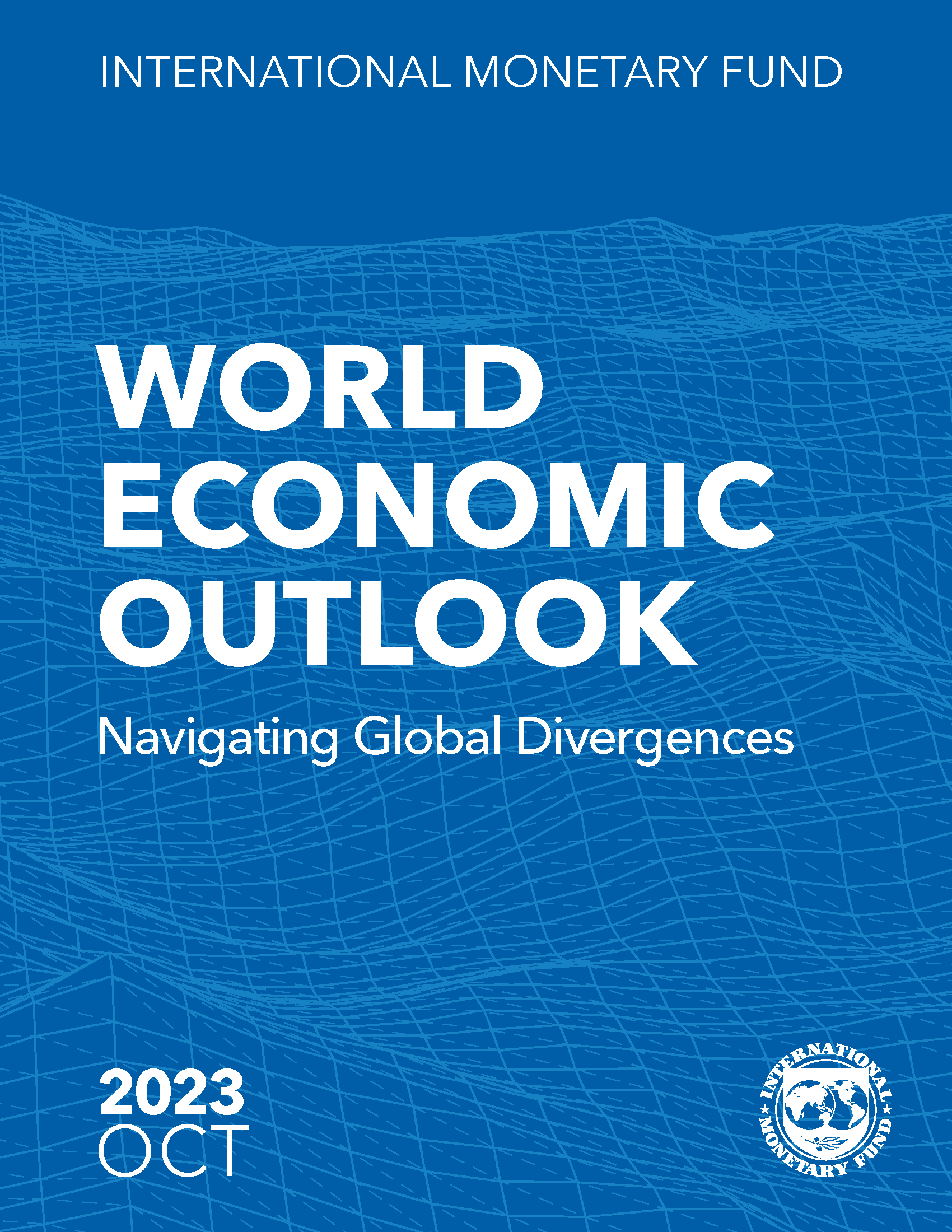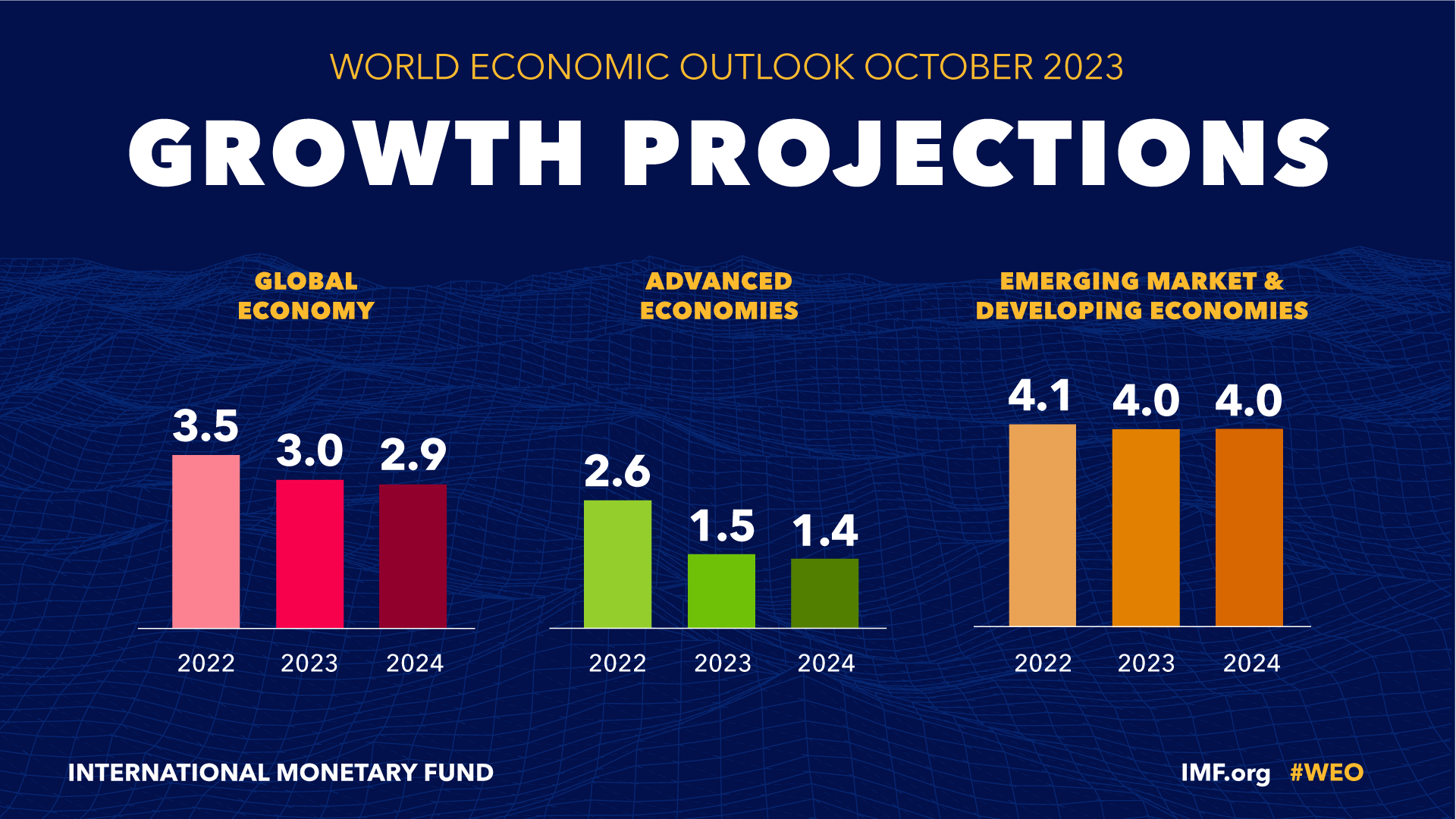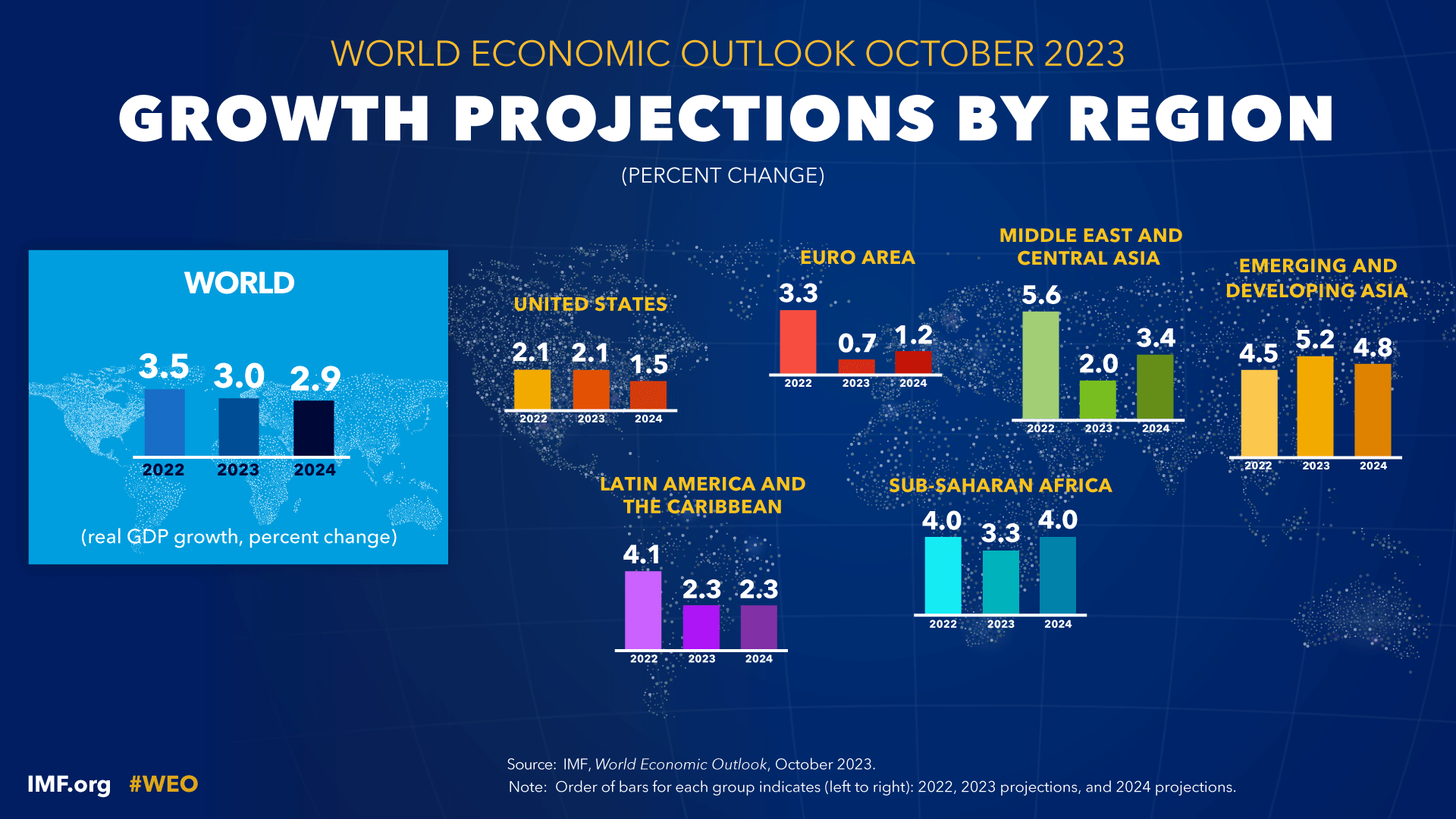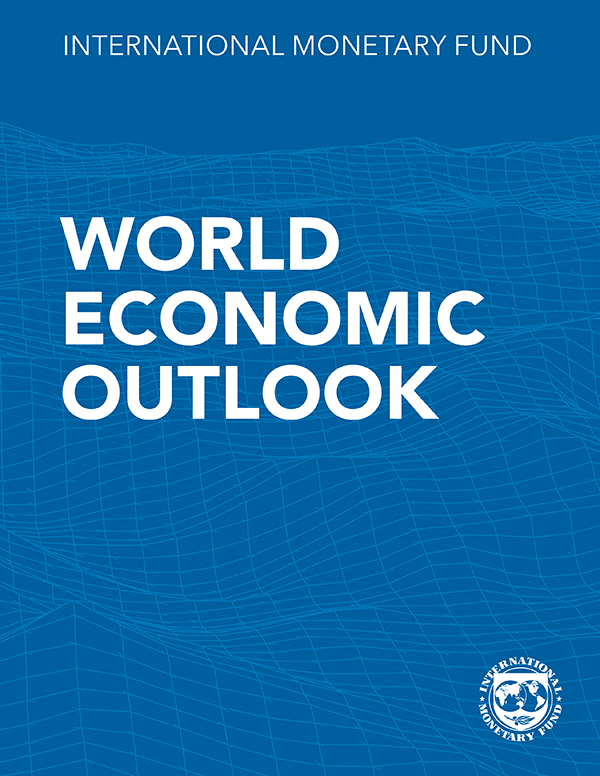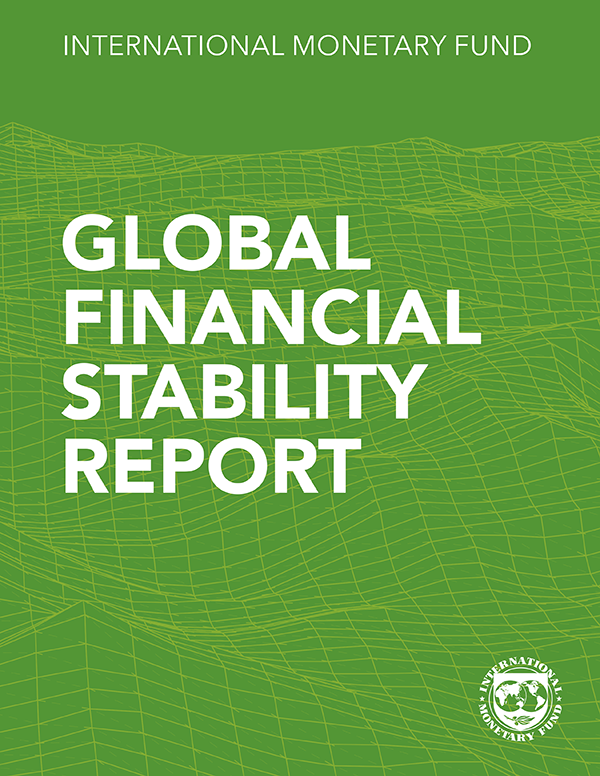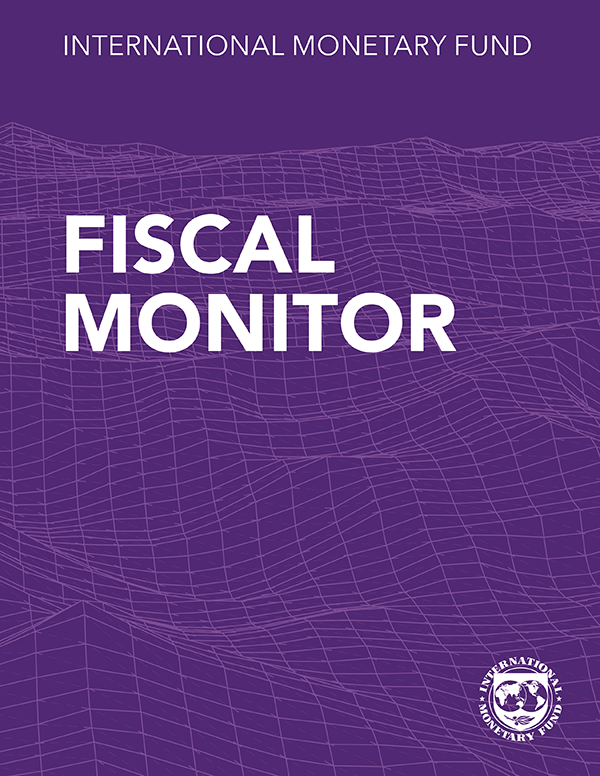Global recovery remains slow, with growing regional divergences and little margin for policy error
The baseline forecast is for global growth to slow from 3.5 percent in 2022 to 3.0 percent in 2023 and 2.9 percent in 2024, well below the historical (2000–19) average of 3.8 percent. Advanced economies are expected to slow from 2.6 percent in 2022 to 1.5 percent in 2023 and 1.4 percent in 2024 as policy tightening starts to bite. Emerging market and developing economies are projected to have a modest decline in growth from 4.1 percent in 2022 to 4.0 percent in both 2023 and 2024. Global inflation is forecast to decline steadily, from 8.7 percent in 2022 to 6.9 percent in 2023 and 5.8 percent in 2024, due to tighter monetary policy aided by lower international commodity prices. Core inflation is generally projected to decline more gradually, and inflation is not expected to return to target until 2025 in most cases.
Monetary policy actions and frameworks are key at the current juncture to keep inflation expectations anchored. Chapter 2 documents recent trends in inflation expectations at near- and medium-term horizons and across agents. It emphasizes the complementary role of monetary policy frameworks, including communication strategies, in helping achieve disinflation at a lower cost to output through managing agents’ inflation expectations. Given increasing concerns about geoeconomic fragmentation, Chapter 3 assesses how disruptions to global trade in commodities can affect commodity prices, economic activity, and the green energy transition.
Chapter 1: Global Prospects and Policies
Divergent growth prospects across the world’s regions pose a challenge to returning to prepandemic output trends. Despite signs of resilience earlier in 2023, the impact of policy tightening to reduce inflation is expected to cool economic activity going forward. While risks to the outlook are more balanced than earlier in the year, on account of Swiss and US authorities’ having acted decisively to contain financial turbulence, they remain tilted to the downside, implying little margin for policy errors. Monetary policy should stay the course to bring inflation to target, while fiscal consolidation is needed to tackle soaring debts. Structural reforms are crucial to revive medium-term growth prospects amid constrained policy space. Accelerating the green transition, increasing resilience to climate shocks, and improving food security for millions of people require strengthened multilateral frameworks and adherence to rules-based platforms for international cooperation.
Chapter 2: Managing Expectations: Inflation and Monetary Policy
Inflation around the world reached multidecade highs in 2022. While headline inflation has since come down, core measures are proving stickier. The high inflation experience of the last two years could engender persistently high inflation expectations, complicating central banks’ paths to getting inflation back to their targets. Chapter 2 summarizes recent developments in inflation expectations across economies, agents, and horizons. Empirical analysis uncovers an increasing role of near-term inflation expectations for inflation dynamics. Using a model-based approach, the chapter finds that inflationary supply shocks are long-lasting and monetary policy is less effective when expectations are backward-looking. However, improvements in monetary policy frameworks, including communication strategies, can help to better inform agents’ expectations and to bring inflation back to target more quickly and at a lower output cost, complementing standard cyclical policies.
Chapter 3: Fragmentation and Commodity Markets: Vulnerabilities and Risks
Russia’s invasion of Ukraine caused major commodity markets to fragment, and geopolitical tensions could make matters worse. Chapter 3 examines how further disruptions in commodity trade could affect commodity prices, economic activity, and the energy transition. The chapter reaches four conclusions. First, commodities are particularly vulnerable to fragmentation due to concentrated production, hard-to-substitute consumption, and their critical role for technologies. Second, further fragmentation would cause large swings in commodity prices and more volatility. Third, commodity trade disruptions would have highly uneven impacts across countries, though global losses appear moderate given offsetting effects across countries. Low-income countries would bear a disproportionate share of the economic cost, due to their high reliance on agricultural imports. Fourth, fragmented minerals markets would make the energy transition more costly, reducing investment in renewables and electric vehicles by one-third by 2030 in an illustrative scenario. A green corridor agreement could guarantee the international flow of critical minerals. Similar agreements for essential food commodities could stabilize agricultural markets. Such agreements would safeguard the global goals of averting climate change and food insecurity.
Publications
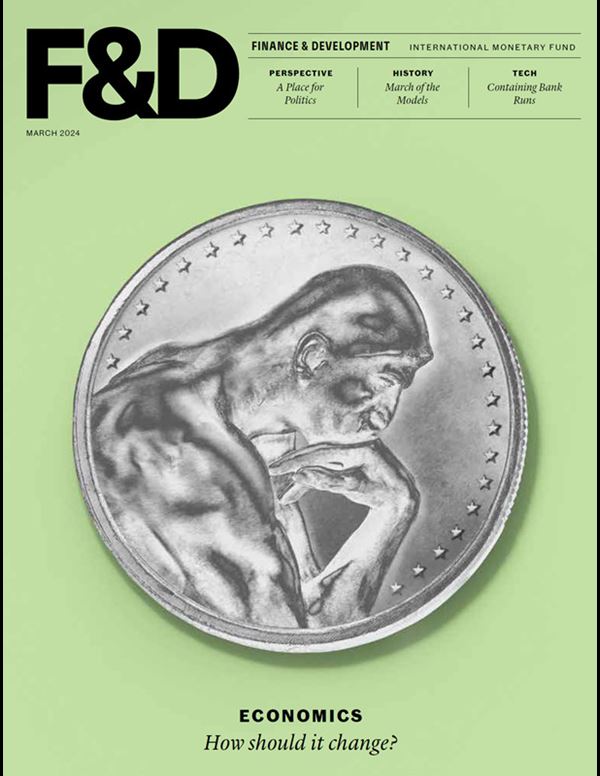
-
March 2024
Finance & Development
-
ECONOMICS
How should it change?
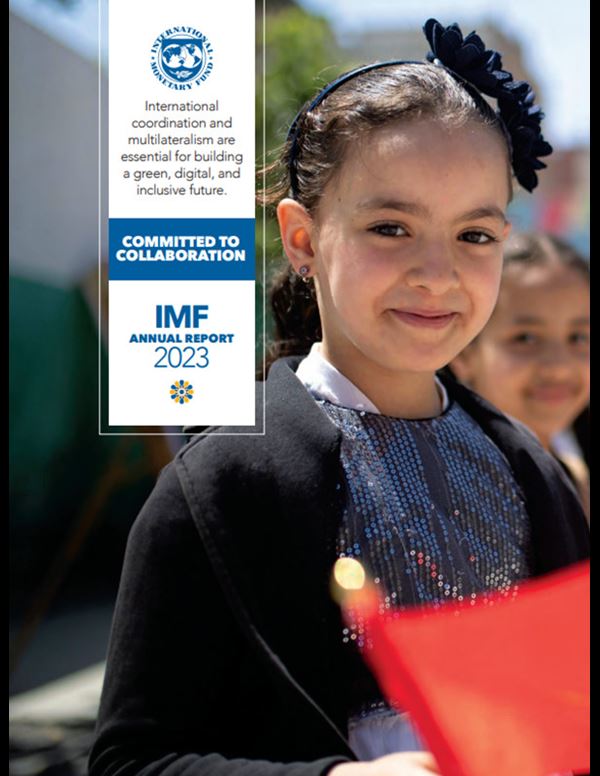
-
September 2023
Annual Report
- COMMITTED TO COLLABORATION
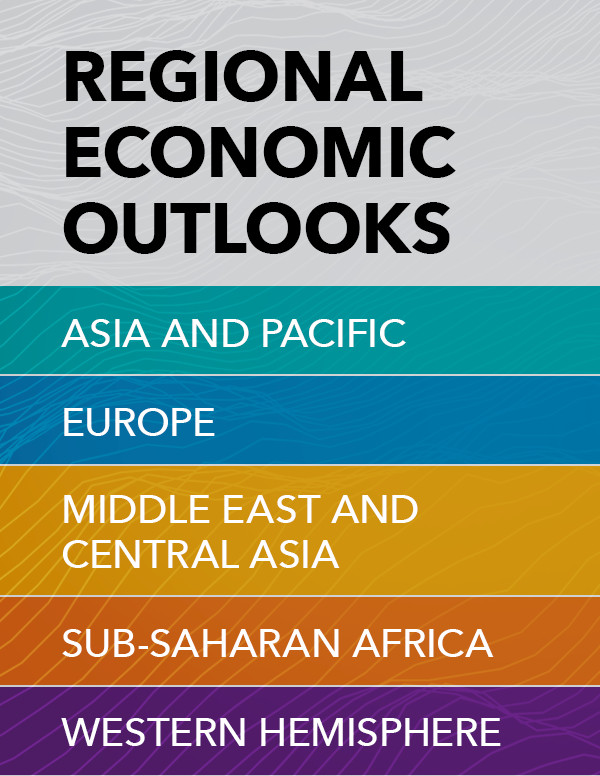
-
Regional Economic Outlooks
- Latest Issues




